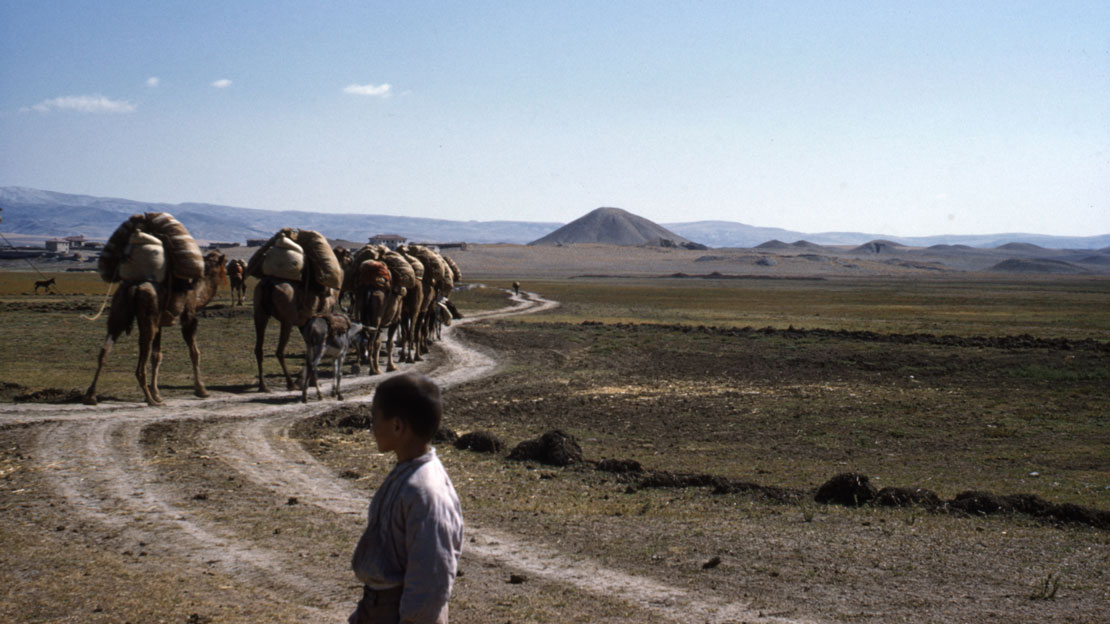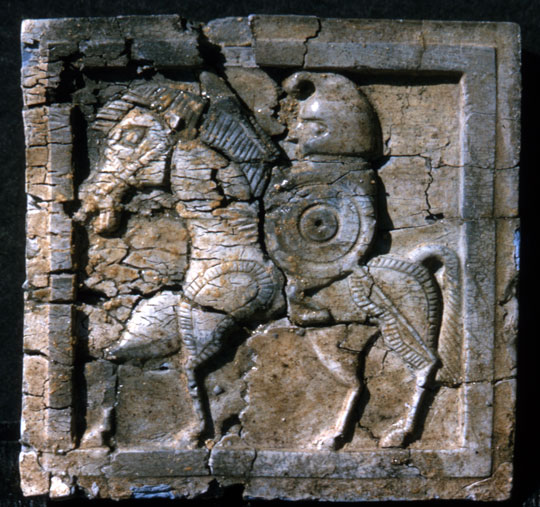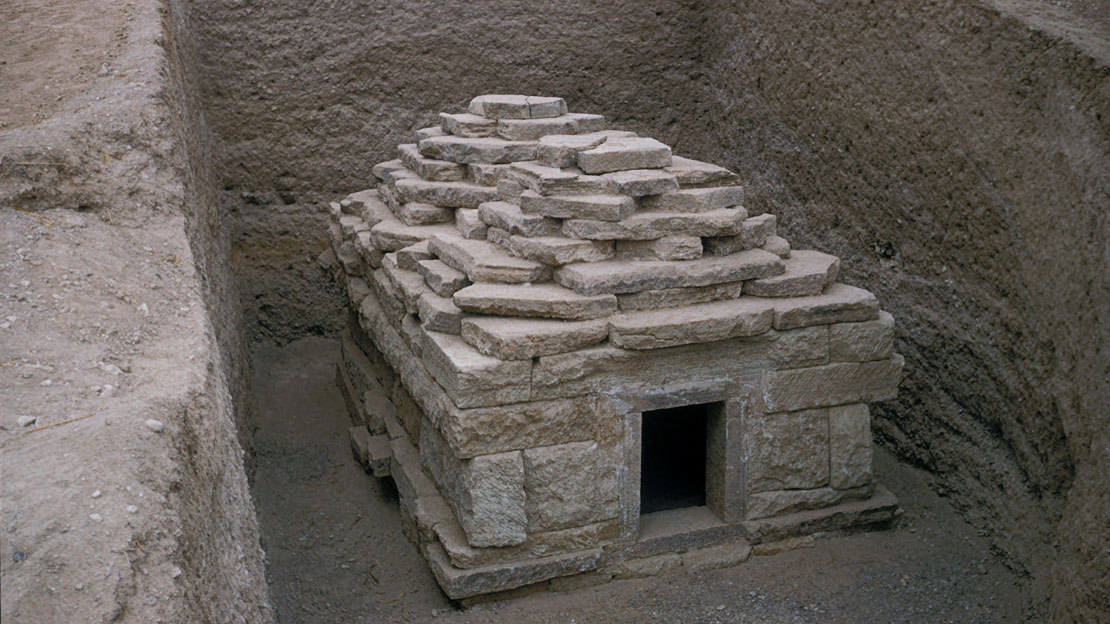Historical Overview

Gordion is one of the most important sites of the ancient world. It is known primarily as the political and cultural capital of the Phrygians, a people who dominated much of central Anatolia during the early first millennium BCE. With its monumental Phrygian architecture, an extensive destruction level dating to around 800 BCE, and a series of wealthy tombs belonging to Phrygian royalty and other elites, Gordion is the premier archaeological type-site for Phrygian civilization. As such, it is on a par with Athens, Rome, Pompeii, the Hittite capital at Hattusha, and Babylon in elucidating for us the material achievements of an ancient civilisation (Figure 1).

People began living at the site of Gordion in the Early Bronze Age, at least as early as ca. 2500 BCE, and that habitation still continues in the village of Yassıhöyük, which lies adjacent to the site. Across that enormous span of time, archaeologists can detect few breaks in habitation. The reasons for the site’s appeal include its location on major trade routes across Anatolia, an abundance of water from the Sangarios (modern Sakarya) river, and broad tracts of arable land suitable for farming.
The major periods represented are the Bronze Age (ca. 2500–1200 BCE), the Iron Age (ca. 1200–550 BCE, largely synonymous here with the Phrygian Period), the Achaemenid Persian (or “Late Phrygian”) period (ca. 550–330 BCE), the Hellenistic era (third to first centuries BCE), the Roman Empire (first to fifth centuries CE), the Medieval period (sixth to 14th centuries CE), the Ottoman period (15th–20th centuries CE) and the Modern era beginning with the formation of the Republic of Turkey in 1923. The pre-Medieval habitation has produced the large settlement mound that is today the central archaeological feature of the site. The mound’s modern Turkish name is Yassıhöyük, literally “flat-topped settlement mound.”
Relatively little is known about the Bronze Age at Gordion, primarily because of overlying monumental buildings of the Phrygian period. On a ridge not far from the main site, however, in the vicinity of the modern village, lies a cemetery belonging to the time of the Hittite Old Kingdom (17th–15th centuries BCE). A few examples of Hittite hieroglyphic writing from the site, and pottery much like that from major Hittite centers, suggest that it somehow fit into the larger Hittite sphere. There is insufficient evidence to determine the extent to which Gordion was affected when the Hittite Empire collapsed around 1200 BCE.
During the subsequent period, which corresponds with Gordion’s Early Iron Age phase, the site witnessed a new cultural element as reflected by handmade pottery with parallels in southeastern Europe. The pottery is taken to mark the beginning of the presence of Phrygians who, as known from later Greek writers, migrated from southeastern Europe into Anatolia.
Gordion is best known as the principal center of the Phrygians and their civilization, and as the seat of the most famous Phrygian king, Midas, who ruled in the late eighth century BCE (Middle Phrygian period). Phrygian material culture holds strong at Gordion well into the fourth century BCE, from humble, village beginnings in the 11th century across the lives of two great citadels (Early and Middle Phrygian), one succeeding the other after a great destruction by fire around 800 BCE. The site initially served as the capital of a presumably independent Phrygian state (at least through the reign of Midas), but thereafter it was subject to other powers: the west Anatolian kingdom of Lydia (first half of the sixth century BCE, if not earlier), and then, for the next two centuries, the Persian Empire.


When Alexander the Great of Macedon began his world-altering campaign against the Persian Empire in 334 BCE, he came to Gordion in that first year and may have wintered there. It is likely that Alexander was greeted by the final vestiges of the later Phrygian citadel. Anything less makes little sense in light of the fact that Gordion was the mustering-point for the contingents of Alexander’s army before their march into Cilicia to confront Darius III, last ruler of the Persian Empire. His stay at Gordion also led to one of the most curious events in ancient history, the cutting of the Gordian knot.

In the decades following Alexander’s visit, Gordion witnessed a transformation from a Phrygian citadel to a large town of the Hellenistic period, as the time after Alexander’s conquest and before the advent of the Roman Empire is known. The site stands as a good example of why the period is so-called, namely, the spread of Hellenic culture outside the boundaries of the old Greek world into areas that had totally different cultural backgrounds and ethnic groups. Inscriptions in the Phrygian language, which had been numerous until now, cease to be found. In their place occur Greek inscriptions, sometimes with Greek or Greek-sounding personal names. Greek gods are worshiped or at least recognized. The repertory of traditional Phrygian material goods, especially pottery, succumbs to Greek types. The population may well have been mixed, with Phrygians, other Anatolians, Persians, and Greeks. Present too, after the middle of the third century, were Celts or Galatians, who had migrated east en masse from western Europe, and who were taken on as mercenaries by Anatolian monarchs. It was, in fact, the Celtic presence that led to Gordion’s abrupt end as a thriving Hellenistic town. In 189 BCE, the Roman general Manlius Vulso, at the behest of the kingdom of Pergamon, came to Gordion on an expedition against the Gauls. He found the site abandoned, the inhabitants having fled in advance of his arrival.
It was not until the first century CE, in the time of the young Roman Empire, that the site of Gordion was refounded, high on the western half of the old Citadel Mound. In good Roman fashion, the buildings were oriented to the cardinal points of the compass, unlike earlier periods of settlement. The new founding may represent a Roman colony; in any case, it appears on the basis of recent excavations to have had a military function. The town also may have had a different name, Vindia or Vinda, as occurs on Roman itineraries for the general vicinity of Gordion. In the second century CE, when nearby Ancyra (modern Ankara) was the thriving capital of the Roman province of Galatia, the site of Gordion also seems to have enjoyed relative prosperity. After a gap in habitation from about 175 until the late third century, the site again witnessed settlement into the Early Byzantine period (sixth century). Another gap was followed by activity in Late Byzantine/Selcuk/Early Ottoman times (13th to 15th centuries). During the late Ottoman period, habitation was centered to the west of the Citadel Mound, at the village of Bebi, which was destroyed in the Battle of the Sakarya in 1921—the climactic engagement in the Turkish War of Liberation. Fox-holes, spent shells, and some human remains are poignant reminders of this conflict. The modern village of Yassıhöyük is the current manifestation of the ongoing history of human settlement at Gordion.
Further reading
- Darbyshire, G. and G.H. Pizzorno. 2009. “Gordion in History,” Expedition 51.2, pp. 11–22.

